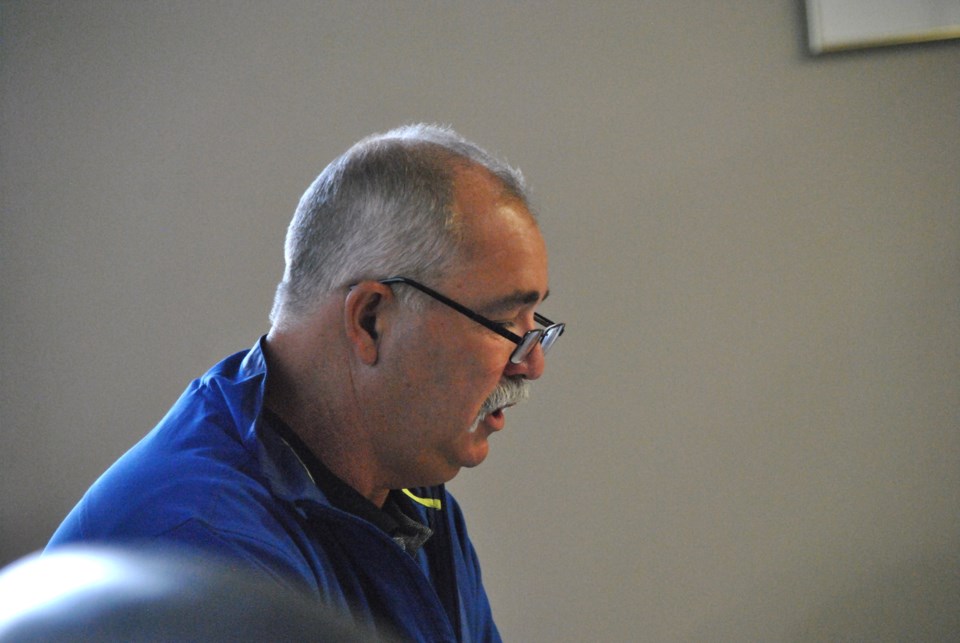BARRHEAD-The Dunstable (Lac La Nonne) wastewater lagoon reopened Oct. 1.
County of Barrhead councillors decided to re-open the facility following a discussion about potential re-opening strategies during their Sept. 21 meeting.
Council also voted 7-2 on a motion from Coun. Bill Lane to instruct the administration to develop a draft policy that outlines a volume allotment program for the lagoon beginning in 2022. Coun. Ron Kleinfeldt and Walter Preugschas were opposed.
The county closed the lagoon in late May after it reached capacity.
County manager Debbie Oyarzun said the lagoon has had capacity issues for some time.
Over the last 20 years, the lagoon has reached or exceeded its capacity limits on several occasions. The lagoon was closed for extended periods in 2007 and 2011. The county also had to make two emergency releases, one in 2019 and another in 2021.
"It is an evaporative cell. It is not designed to be released," she said. "But we worked with [Alberta Parks and Environment] to get the two releases."
Oyarzun added environmental reasons, i.e. the weather were the main culprit for the capacity issues "rather than any change in the amount of effluent going in." To find a solution to the capacity issue, Oyarzun said council commissioned Associated Engineering to complete a full capacity assessment of the lagoon, including a sounding and analysis of the annual capacity based on expected evaporation performance.
According to original documents, the lagoon's capacity was 3,468 cubic metres annually.
But because of the sludge that has accumulated over the years, its capacity is now more like 3,236.
It should also be noted that Alberta Environment and Parks (AEP) recommends that a minimum freeboard of 0.6 metres is maintained for the lagoon's operation. She also noted that the wastewater level had decreased to the point that even with the buffer, there was sufficient capacity to reopen the lagoon.
"Based on [Associated Engineering's] analysis, sludge accumulation has only reduced the lagoon's capacity by about 15 per cent," Oyarzun said. "Over 30 years, that is pretty good ... and it confirms that it is not the issue, but weather conditions."
However, it means unless the county decides to expand the wastewater lagoon system, Oyarzun said, they will remain at the mercy of the elements.
"If we have a year where we are not getting a lot of evaporation, then the capacity is closer to 2000 [cubic metres]. With good evaporation, it is about 4,300 [cubic metres] with the average being around that 3,200 cubic metres," she said.
However, the question remains, Oyarzun said, of what to do to manage the lagoon. She said if they continue with the status quo, residents and sewage hauling companies should continue to expect periodic and sometimes prolonged lagoon closures.
Associated Engineering said the county could de-sludge the lagoon.
"But would that be a good value for the money?" she asked rhetorically, estimating the cost of de-sludging at $150,000. "We are recommending against it because, at best, you are only gaining 15 per cent."
Oyarzin added that due to provincial regulations, they cannot simply expand the cell.
"We would have to build a second cell as the province no longer allows single-cell lagoons. That would easily be over $2 million, not including any environmental constraints," she said.
Coun. Darrell Troock said the county owns a piece of land near the lagoons and suggested they could use it to build a new two-cell lagoon.
Infrastructure director Ken Hove said they would still need to go through the appropriate permitting process.
"And then you would have to determine if it were cost-effective for the county," he said.
Oyarzun added that they would also decommission the current site first before constructing the new lagoon, which she reiterated would likely cost be more than $2 million.
Troock also suggested that another option was that the municipality could close the Dunstable lagoon as Lac Ste. Anne County's lagoon wastewater facility is only 21 kilometres away and the municipality has an agreement with their municipal neighbours to allow their residents to dump at the site.
He added there is no capacity issue at the Lac Ste. Anne facility.
"They have cells that they haven't started to use," Troock said.
Reeve Doug Drozd said the drawback is that Lac Ste. Anne's tipping fees are considerably higher than the county's.
To manage the amount of wastewater going into the lagoon, the administration came up with two options, the first being first-come, first-served, and locking the gates for the year when its capacity was reached.
The second was a yearly allotment system, where the top five or six companies would be assigned an annual allotment based on volume.
The first option, Oyarzun, said is the status quo and would be the easiest to manage.
But that option could potentially impact Elks Beach residents the most as they typically only haul during the summer months, at which point the lagoon could be closed.
Coun. Walter Preugschas said he would rather go with the status quo, as he felt it was unfair to limit access to only a select few.



